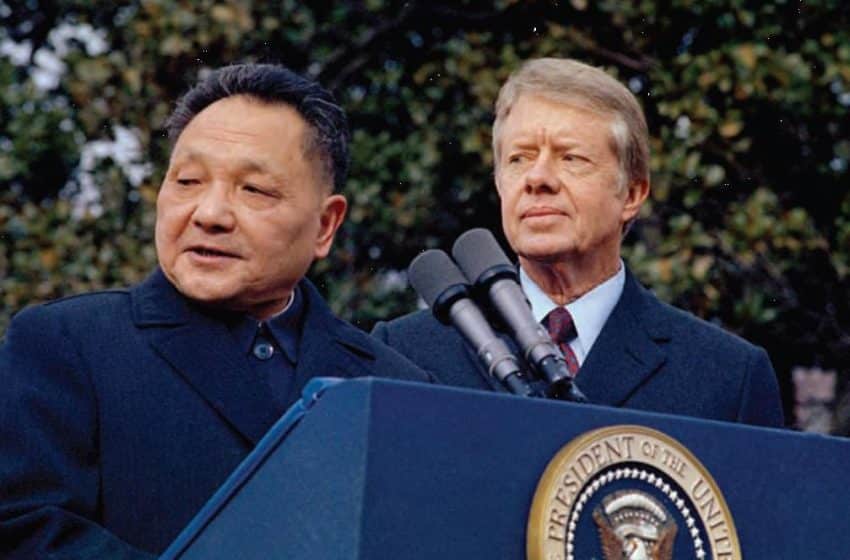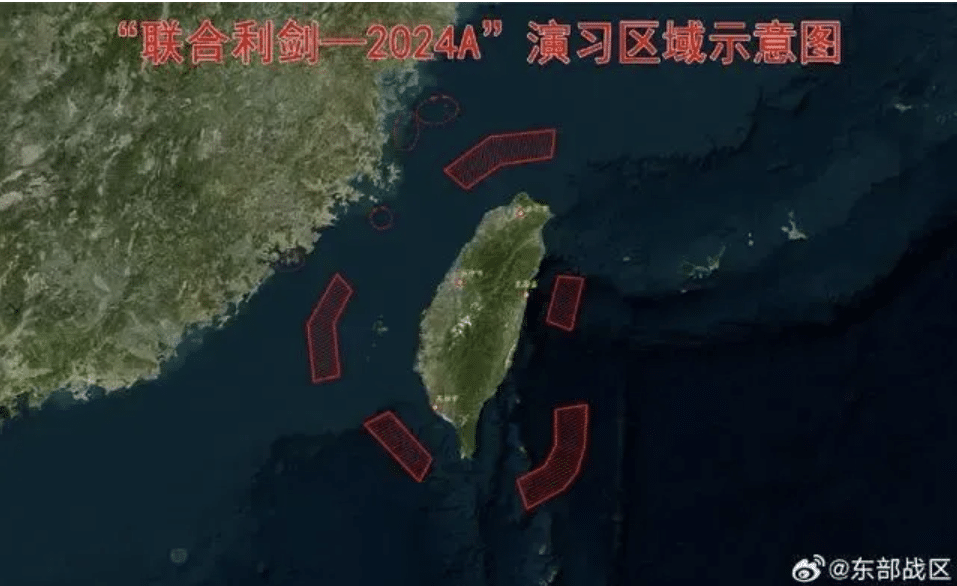The U.S.-China Competition: What is the End Goal?
- Analysis
 Juan Zhang
Juan Zhang- 11/09/2023
- 0
The Trump administration described China as a strategic “competitor” in the 2020 National Security Strategy. Similarly, the Biden administration defined China as “the most consequential geopolitical challenge” in the October 2022 National Security Strategy report.
“Competition” has become a commonly used word when describing this relationship. As for the Chinese side, some scholars reluctantly use “competition” to describe the current state of bilateral relations, as Da Wei of Tsinghua University pointed out in a recent interview. Da Wei’s view is that the current state of bilateral relations is more negative than a win-win type of competition.
Since competition has become such an unavoidable word in this relationship, what does the U.S. envision as the end goal for the competition? How do Chinese schools portray the U.S.’s competition with China? How exactly does competition play out or look in U.S.-China relations? Editors of the U.S.-China Perception Monitor invited two scholars from each side to share their thoughts on this important concept. John Mueller of Cato Institute, Robert Ross of Boston College, and Fudan University’s Wei Zongyou and Wu Xinbo shared their insights on the idea of competition.
John Mueller, Professor Emeritus of Political Science at Ohio State University and Senior Fellow at the Cato Institute
Over the last several years, officials in the United States have referred to China as a “competitor” or a “challenger.” Although these terms are certainly less hostile than “adversary” or “enemy,” it is not very clear what, if anything, they mean.
All these words imply “threat,” and that is something that is generally envisioned to be created by China’s steadily growing economic capacity. This is somewhat reminiscent of the threat deemed to have been presented by Japan some 40 years ago when a prominent Harvard professor solemnly insisted that “economics is the continuation of war by other means” and books with portentous titles like Japan as Number One and The Coming War with Japan became popular.
Central to the current development seems to be a concern that China, although 78th in per capita Gross Domestic Product, has likely become second in overall GDP and might eventually become first—positions that, because of its sheer size, it has maintained for most of the last two millennia. GDP is only a number, and it is questionable whether China will become first by this measure in the next decades. But even if it does, its growing wealth will generally benefit, not harm, the United States. For one thing, a wealthier China means the Chinese can buy more foreign goods and services—and debt.
However, eschewing such economic logic, observers often perceive a threat in China’s rapidly increasing wealth, even arguing, as the title of a book by another prominent Harvard professor puts it, that the U.S. and China are Destined for War. The concern is that due to its wealth, China will become a “hegemon” (another word that has little meaning) that would dominate its region much as the United States “dominates” the Western Hemisphere (although tiny nearby Cuba has been thumbing its nose at it for over 60 years). China, it is feared, would have the ability to develop sophisticated weaponry and the potential to project power around the globe. It could even outspend the U.S. in defense (that is, waste even more of its money on its military), and interfere in America’s neighborhood. However, even those most concerned by China’s rise acknowledge that it does not seem to harbor extensive ambitions about conquest.
There are, of course, notable differences on some issues, including the status of Taiwan and the domestic antics of China’s antiquated, kleptocratic Communist Party, which is determined to remain in control at all costs. And from time to time, China has indeed been emboldened to throw its weight around in its presumed area of “influence” (another word with little meaning)—although that weight-throwing has proved to be counterproductive by making its neighbors wary and pushing them closer to the United States.
However, China has become almost the quintessential trading state and is dependent on the world economy for economic development and for the consequent acquiescence of the Chinese people. Armed conflict would be extremely—even overwhelmingly—costly to the country and especially to the regime in charge. And it is faced with many problems as its economy slows. The best bet is that these conditions will essentially hold.
Indeed, there is a danger of making China into a threat by treating it as such, by refusing to consider the unlikelihood as well as the consequences of worst-case-scenario fantasizing, and by engaging in endless metaphysical talk about rejuggling military hardware to somehow “balance” against that “competitor.”
U.S.-China Competition According to The Biden Administration

Wei Zongyou, Professor at Center for American Studies at Fudan University
During the Trump administration, there was skepticism about the nearly 40-year policy of engaging with China, with China being defined as a strategic competitor to the United States. This period witnessed the use of tools such as trade wars and tariffs, pushing Sino-American relations toward the brink of confrontation and conflict.
Upon taking office, the Biden administration continued the strategic posture set by the Trump administration. It declared the failure of the engagement policy with China and formulated a new policy framework centered around “strategic competition,” replacing the decades-old approach of engagement. As of now, the Biden administration’s policy framework toward China, guided by “strategic competition,” primarily encompasses several key aspects:
First, it recognizes China as a long-term, comprehensive strategic competitor to the United States, as the sole power possessing the diplomatic, economic, technological, and military capabilities to pose a comprehensive strategic challenge to the United States. It may even challenge U.S. hegemony and the predominant international order.
Second, it views the next decade as a critical period for Sino-American strategic competition. If the United States cannot strengthen its domestic politics, build alliances, and fortify the foundation of its power to shape a favorable external strategic environment, it might risk failure in this strategic competition that profoundly affects its national destiny.
Third, it emphasizes that technology is the linchpin of Sino-American strategic competition. Technology not only influences a country’s long-term economic vitality and competitiveness but also its military capabilities. The outcome of this technological competition between China and the United States will likely determine the victor in this strategic competition. Therefore, the Biden administration is not only enhancing domestic technological support but also significantly strengthening restrictions on high-tech exports to China, imposing strict limitations on mutual investments in the technology field, and attempting to form technology alliances aimed at China.
Fourth, it regards the Taiwan Strait as a potential Achilles’ heel in Sino-American relations. The United States, on the one hand, reaffirms its position of not supporting Taiwanese independence and adheres to the One China policy when communicating with the mainland. On the other hand, it strengthens Taiwan’s asymmetric defense capabilities, increases forward military deployments, and forges small multilateral security mechanisms to bolster a comprehensive deterrence against the mainland, preventing the possibility of military reunification.
Fifth, while emphasizing the reinforcement of strategic competition with China, it also pays attention to risk management. This is achieved through high-level dialogues, contacts, and negotiations to reduce misunderstandings and miscalculations, prevent inadvertent conflicts, and seek possible cooperation in fields such as arms control and climate change.
U.S.-China Competition: A Conflict of Interest Between a Rising and Declining Power

Robert Ross, Professor of Political Science at Boston College and Associate at John King Fairbank Center for Chinese Studies at Harvard University
The United States and China are locked in a competition that will persist for many decades. This competition does not reflect misperceptions, an escalating tit-for-tat dynamic, or a security dilemma. Rather, the rise of China necessarily challenges the post-World War II East Asian security order and the global political order, and the United States is determined to resist China’s rise.
China is determined to use its greater capabilities to enhance its maritime security by weakening U.S. military presence in East Asian waters. It is also determined to erode U.S. dominance of the global order to promote its own interests. The United States is determined to resist China’s rise. Its objective is to maintain U.S. military superiority and its leadership of the global order.
The United States and China understand each other well and actively oppose each other’s objectives. This is a zero-sum competition that reflects a conflict of interest between a rising power and a declining power.
China has used its growing naval capabilities to pressure South Korea, the Philippines, and Vietnam to resist U.S. efforts to oppose the rise of China. In a fundamental change in the regional security order, most countries in East Asia insist that they will not take sides in the U.S.-China competition. This trend undermines U.S. alliances in East Asia and weakens U.S. security.
The United States has adopted a containment policy to stop the rise of China. The Biden administration has expanded defense cooperation with South Korea, the Philippines, and Taiwan. U.S. leaders have made clear that the purpose of U.S. trade and technology policies is to weaken China’s economy and military power. They have made clear that the United States must resist China’s rise so that it can continue to dominate the global order.
As the U.S. and China persist in challenging each other’s strategic ambitions, there is growing concern over the costs of escalated conflict. China has responded to U.S. technology policies with controls over the exports of strategic minerals. There is also heightened concern in China and the United States over the growing likelihood of crises over Taiwan and the Philippines.
Because the U.S.-China competition does not reflect differences over policy but rather over the power transition, there is little opportunity to negotiate differences and seek mutual compromise. At best, dialogue can only help at the margins. The competition will not ease until a crisis compels mutual adjustment or until one or both sides exhaust themselves in the competition so that competition is no longer economically sustainable.
The United States and China must consider less costly policy alternatives. For the United States, is military and global dominance feasible or necessary, or can it accept a bi-polar world in which both China and the United States exercise global leadership? For China, rather than rely on coercive diplomacy and risk crises, can it allow ongoing economic development and greater military capabilities to promote greater security? How the United States and China address these questions will determine the trajectory of the competition and the prospects for peace.
The Goal of the U.S.’s Competition with China: Maintain Hegemonic Status and Dominant Influence

Wu Xinbo, Professor and Dean at the Institute of International Studies and Director at the Center for American Studies at Fudan University
The Biden administration’s China policy has inherited some of the Trump administration’s policies but also made some adjustments when Biden took office in 2021. On the one hand, he has continued the essential positioning and policy framework towards China from the Trump administration. On the other hand, he aims to create a more favorable and sustainable strategy for competition with China.
In the long-term trend of strategic competition between China and the United States, both sides are strengthening their strategic and policy designs, vying for dominance in this relationship and promoting their respective interests. If the period of strategic competition between China and the United States during the Trump administration was characterized by uncertainty and conflict, the Biden administration’s China strategy is more predictable and manageable. In the meantime, China hopes to enhance the benign nature of competition, expand the space for cooperation, and effectively manage differences. Shaping the “new normal” of strategic competition between the two countries is urgent for both sides.
The Biden administration’s China policy includes the following key elements. In terms of perception, it views China as the “most serious competitor” and the “only competitor potentially capable of combining its economic, diplomatic, military, and technological power to mount a sustained challenge to a stable and open international system.” Based on this assessment, the goal of U.S.’s China policy is to address the challenge posed by a more powerful and confident China, and maintain American hegemonic status and dominant influence. The essence of the Biden administration’s policy towards China primarily focuses on competition while considering the necessary confrontations and potential cooperation.
The Biden administration’s China policy carries a “quasi-Cold War” feature, encompassing ideological and institutional aspects and factors related to power and international influence. Against the backdrop of China’s development and governance achievements, highlighting its systemic advantages while revealing various shortcomings in the functioning of the American system, the Biden administration seeks to prove the superiority of the American system. It aims to surpass China in the competition of governmental systems. At the same time, the Biden administration seeks to restrain the rise of China’s comprehensive national power and the expansion of its international influence to maintain its leadership position. In practical terms, the Biden administration’s power politics toward China is more pronounced. Whether playing the human rights and democracy card or the international rules and order card, the purpose is to tarnish China’s international image and create leverage for American diplomacy towards China.
(This text was an excerpt from the author’s article “Shaping the New Normal of China-U.S. Strategic Competition,” published in the second issue of 2022 in “International Issues Research.” Professor Wu Xinbo made updates based on the original content.)
Author
-

Juan Zhang is a senior writer for the U.S.-China Perception Monitor and managing editor for 中美印象 (The Monitor’s Chinese language publication).







